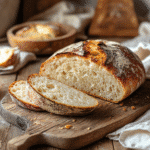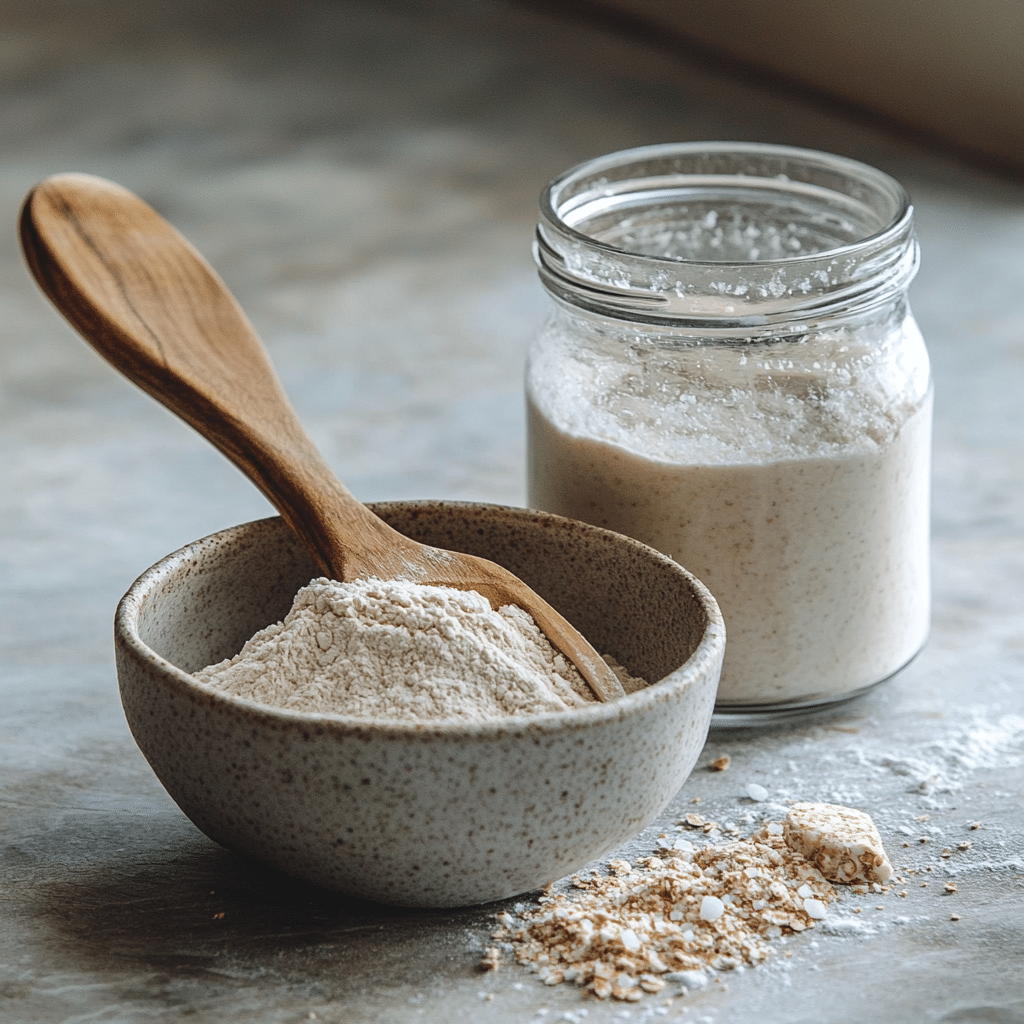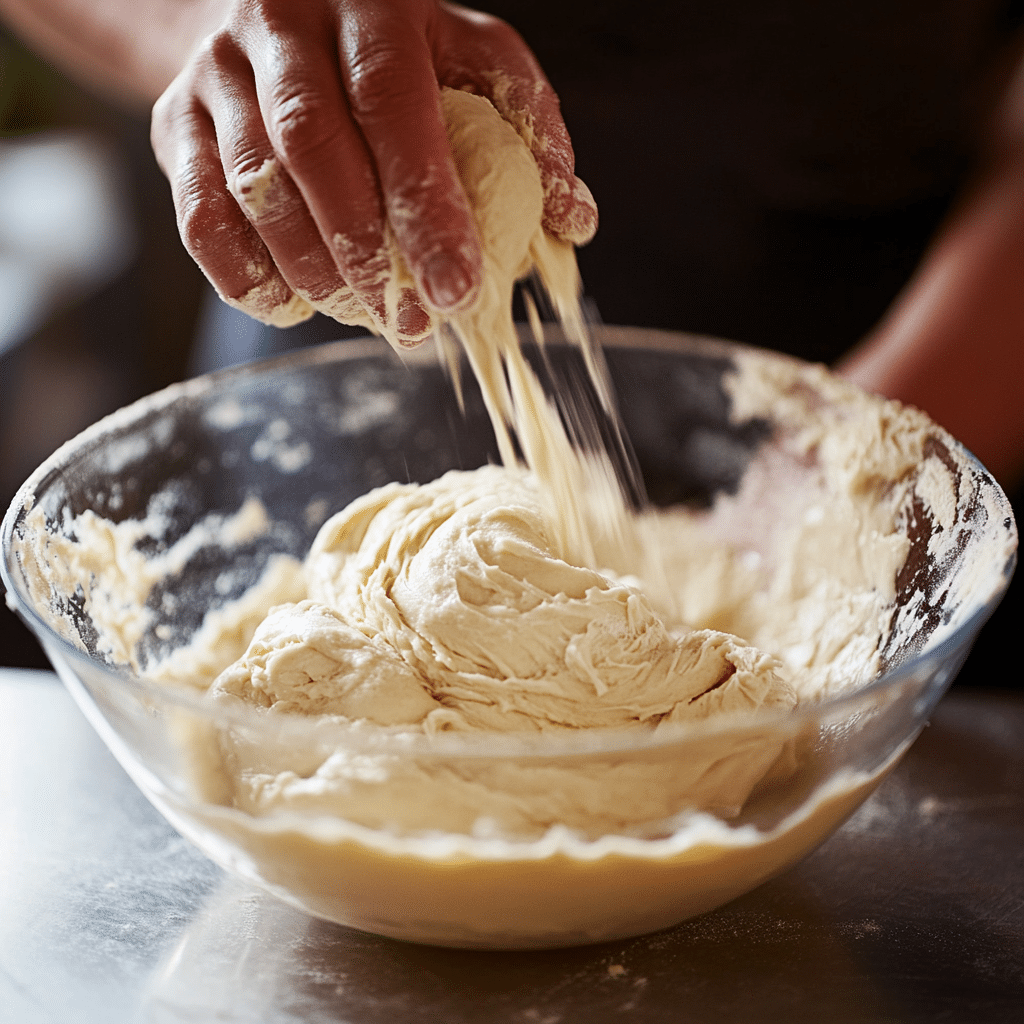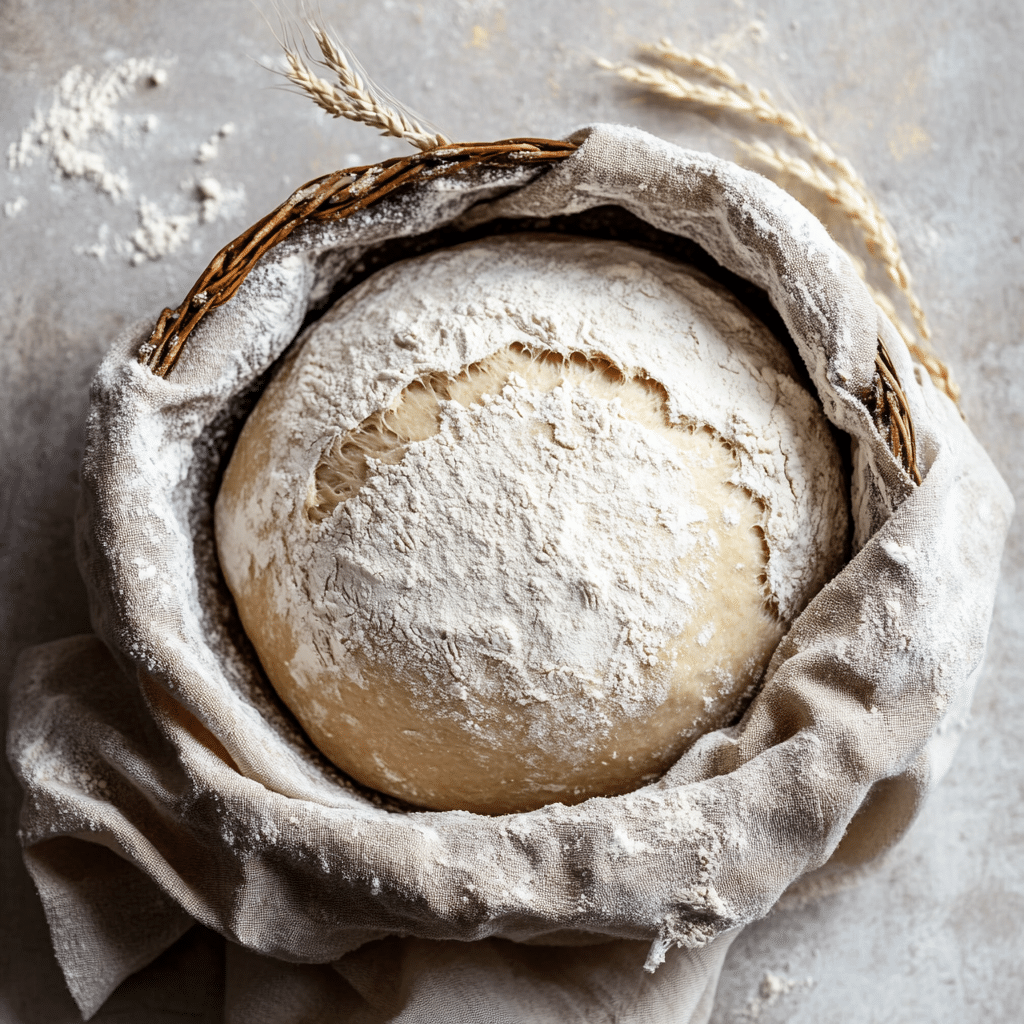Low FODMAP sourdough bread is a game-changer for anyone living with IBS or navigating a FODMAP-friendly diet. Bread often feels like forbidden territory, but not all loaves are off-limits. In this article, we’re diving into how to enjoy this gut-friendly sourdough without discomfort. You’ll discover how it’s made, why fermentation matters, and how to bake your own with confidence. We’ll also explore trusted store-bought options and answer the most common questions about FODMAPs and sourdough. Let’s reclaim the joy of bread, one carefully fermented slice at a time—starting with a personal story from my kitchen.
The Story Behind Low FODMAP Sourdough Bread
A loaf, a memory, and a second chance
Years ago, I thought sourdough was off the table for me. I had just started the low FODMAP diet after years of battling stomach pain, and bread was my biggest heartbreak. Then came a stormy Mendocino morning. I pulled out Clementine—my beloved starter—and experimented. I fermented longer, used spelt flour, and trusted the wild yeast. The result? A tangy, crusty loaf that didn’t hurt my gut. That was my first low FODMAP sourdough bread, and it changed everything.
From that moment, my baking transformed. I started teaching others, sharing how this fermented favorite could be friendly to sensitive stomachs. I realized it wasn’t the bread—it was the way we were making it. With the right flour and a long fermentation, sourdough could be back on the table.
Why low FODMAP sourdough bread works
The magic is in the fermentation. Traditional sourdough, when fermented for 20–24 hours, allows bacteria and yeast to break down FODMAPs—especially fructans found in wheat. That’s why a true low FODMAP sourdough bread can often be tolerated, even by those with IBS.
It’s important to know that not all sourdough is safe. Commercial loaves labeled “sourdough” may only mimic the flavor without the long fermentation process. When making your own or choosing a store-bought version, look for signs of natural fermentation, minimal ingredients, and ideally spelt or gluten-free flours.
Print
Low FODMAP Sourdough Bread: 5 Powerful Tips for Delicious Relief
- Total Time: 24 hours
- Yield: 1 loaf 1x
Description
A slow-fermented, gut-friendly sourdough bread made with spelt or gluten-free flour. Perfect for IBS and low FODMAP diets.
Ingredients
2 cups organic white spelt flour or gluten-free blend
1/2 cup active sourdough starter (rice or spelt-based)
3/4 cup filtered water
1 tsp sea salt
Instructions
1. In a large bowl, mix flour, water, and starter until just combined.
2. Cover and let rest for 30 minutes (autolyse).
3. Add salt and knead or stretch and fold.
4. Let dough rise at room temp for 20–24 hours.
5. Shape into a boule, place in banneton.
6. Proof 3 hours at room temp or overnight in fridge.
7. Preheat oven to 475°F with Dutch oven inside.
8. Bake covered 25 minutes, then uncovered 20 minutes.
Notes
For a gluten-free version, use a certified GF blend.
Always allow full fermentation to reduce FODMAP content.
Best consumed within 2 days or freeze slices for later.
- Prep Time: 30 minutes
- Cook Time: 45 minutes
- Category: Bread
- Method: Baking
- Cuisine: Gut-Friendly
Nutrition
- Serving Size: 1 slice
- Calories: 140
- Sugar: 0g
- Sodium: 220mg
- Fat: 0.5g
- Saturated Fat: 0g
- Unsaturated Fat: 0.5g
- Trans Fat: 0g
- Carbohydrates: 30g
- Fiber: 2g
- Protein: 3g
- Cholesterol: 0mg
Keywords: low FODMAP sourdough bread, IBS bread, spelt sourdough
How to Make Low FODMAP Sourdough Bread at Home
Choosing the right ingredients for sensitive guts
When it comes to crafting low FODMAP sourdough bread, every ingredient matters. Start with flour that’s naturally lower in FODMAPs. Organic white spelt flour is an excellent choice—milder on the gut but still rich in flavor. You can also use a certified gluten-free flour blend, especially one that includes rice, potato, or tapioca starch.
Water and salt round out the base. But the heart of the process is your sourdough starter. If you haven’t made one yet, try a rice flour starter—it’s naturally gluten-free and works beautifully. Fermentation is what makes this bread tolerable, so let your dough rise for at least 20 to 24 hours. This long, slow ferment breaks down fructans, the high FODMAP compound in wheat that often causes discomfort.
Step-by-step guide to baking success
Once you’ve gathered your ingredients, here’s a simple method that’s worked for dozens of my workshop students:
- Mix flour, water, and active sourdough starter in a large bowl.
- Let it rest (autolyse) for 30 minutes.
- Add salt, then knead gently or use the stretch-and-fold method.
- Let the dough rise in a covered bowl at room temperature for 20 hours.
- Shape it, place in a banneton, and proof for 3–4 more hours or overnight in the fridge.
- Bake in a hot Dutch oven at 475°F for 25 minutes covered, then 20 minutes uncovered.
This method results in a loaf that’s crusty, deeply flavorful, and gentle on digestion.

Best Store-Bought Low FODMAP Sourdough Bread Options
Finding reliable brands that support digestion
If you’re not quite ready to bake your own low FODMAP sourdough bread, don’t worry—there are trustworthy store-bought options out there. But tread carefully. Many commercial loaves labeled “sourdough” are made with yeast and vinegar instead of a natural starter, and they skip the long fermentation process that breaks down FODMAPs.
For truly low FODMAP options, look for brands that use traditional methods and minimal ingredients. One great tip: check for fermentation time on the label or brand site. Bread that’s been fermented for at least 20 hours is usually a better choice for sensitive stomachs. Also, loaves made with spelt, oat, or gluten-free flours are generally more tolerable.
Some artisan bakeries now offer low FODMAP sourdough bread online with nationwide delivery. You can also explore local co-ops and health food stores—ask questions, read labels, and keep your eyes open for naturally leavened breads.
Is Trader Joe’s sourdough low FODMAP?
This is a common question—and the answer is, unfortunately, not always. Trader Joe’s does carry sourdough, but many of their varieties are made with commercial yeast and don’t specify fermentation time. Unless the packaging clearly states “long fermented” or lists minimal ingredients (like flour, water, salt, and culture), it’s safer to assume it’s not FODMAP-friendly.
That said, Trader Joe’s does occasionally feature specialty loaves or limited-edition breads that are naturally fermented—so keep an eye out and read carefully..
FAQs and Tips for Living Low FODMAP Without Missing Out

Can I have sourdough bread on low FODMAP?
Yes, you can have low FODMAP sourdough bread—as long as it’s made the right way. The key is traditional fermentation. When sourdough is fermented for at least 20–24 hours, the bacteria naturally reduce FODMAP content, especially fructans. This makes it far more tolerable for people with IBS compared to conventional bread.
Stick to loaves made with spelt or gluten-free flour, and avoid breads with commercial yeast or added sweeteners.
Which brands of sourdough bread are low in FODMAP?
Look for brands that mention natural leavening, long fermentation, and minimal ingredients. Companies like Berlin Natural Bakery (spelt-based), Pure Knead, and AWG Bakery (gluten-free sourdough) are often FODMAP-friendly. Always verify their ingredient lists and fermentation practices. When in doubt, smaller artisan bakeries are often more transparent than commercial brands.
Is Trader Joe’s sourdough low FODMAP?
Most of the time, no. Trader Joe’s sourdough is usually not long-fermented, and often contains added yeast. Unless the label clearly states it’s naturally fermented and lists only basic ingredients (like flour, water, salt, and starter), it’s not guaranteed to be low FODMAP.
Some customers report tolerating certain loaves better than others, but IBS responses can vary widely. When in doubt, it’s best to opt for known low FODMAP brands or homemade options
What is the best bread for low FODMAP?
The best bread is one that combines long fermentation, minimal ingredients, and low-FODMAP flours. Sourdough made from white spelt or certified gluten-free blends tops the list. Also, look for recipes or loaves that use rice, oat, or potato starches without high-fructan additives like inulin or honey.
Homemade sourdough gives you full control, but if you’re shopping, remember: long fermentation, short ingredient list, and clear labeling are your must-haves.
CONCLUSION
Living with IBS or following a FODMAP diet doesn’t mean giving up bread. With a bit of fermentation magic, low FODMAP sourdough bread can bring real comfort back to your table. Whether you bake your own or buy smartly, trust in time, simplicity, and your senses. From my Mendocino kitchen to yours—here’s to bread you can truly enjoy.
for more recipes followo me in facebook


